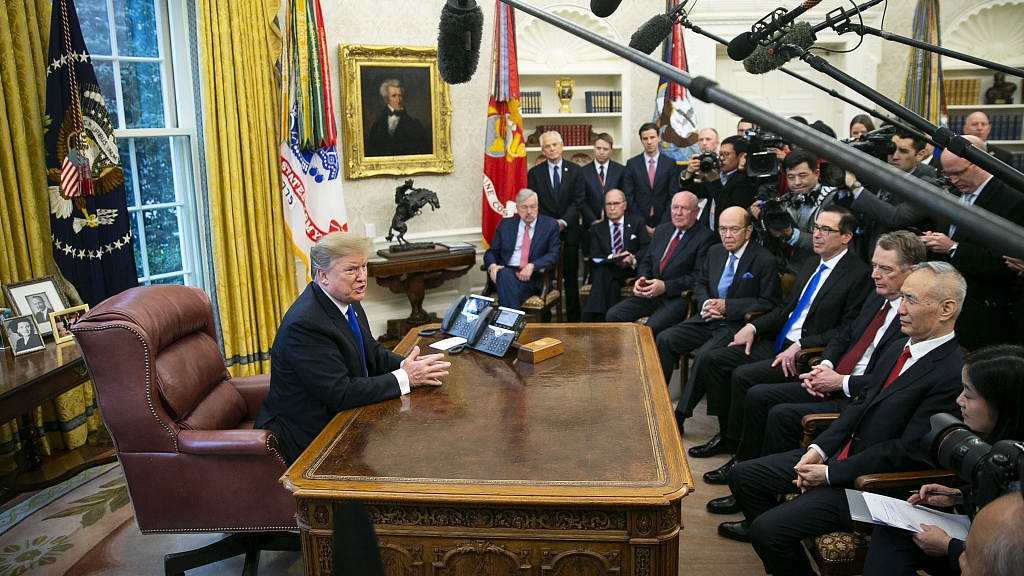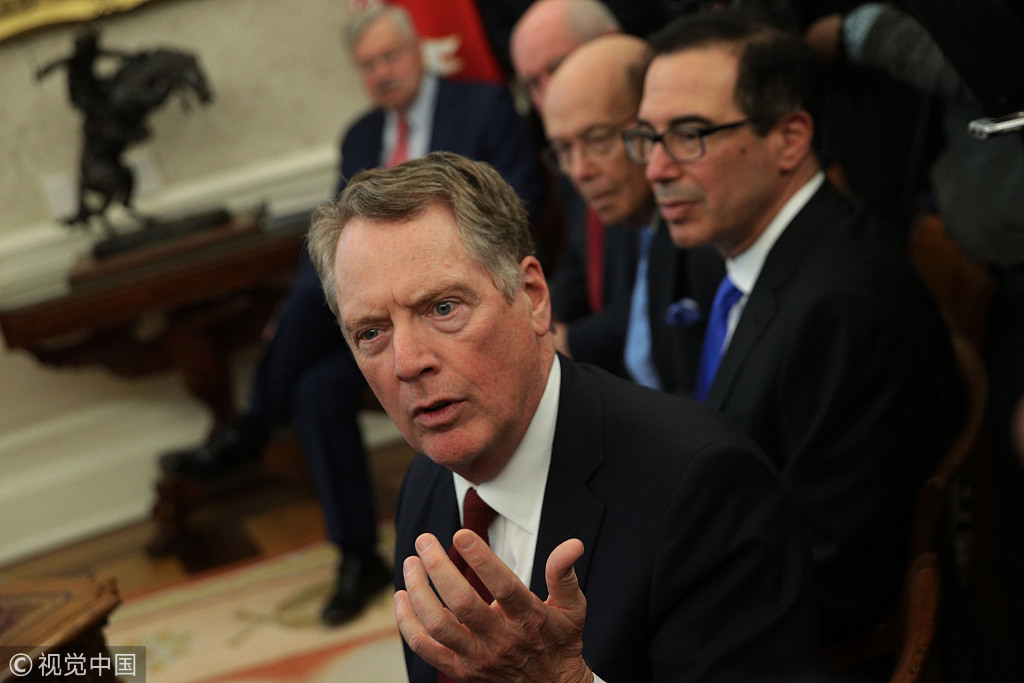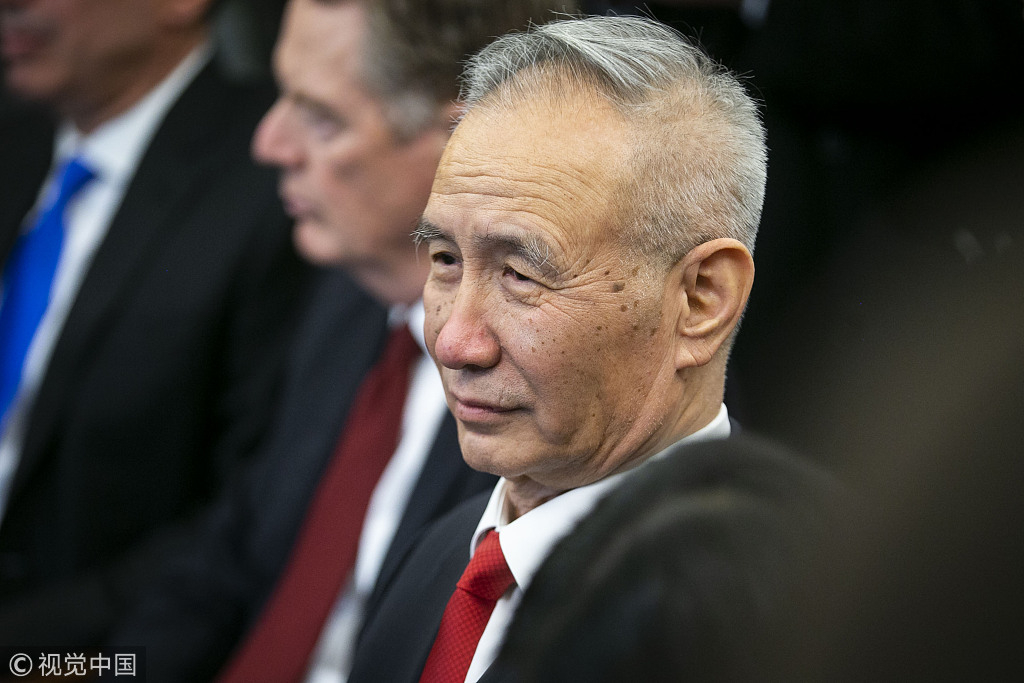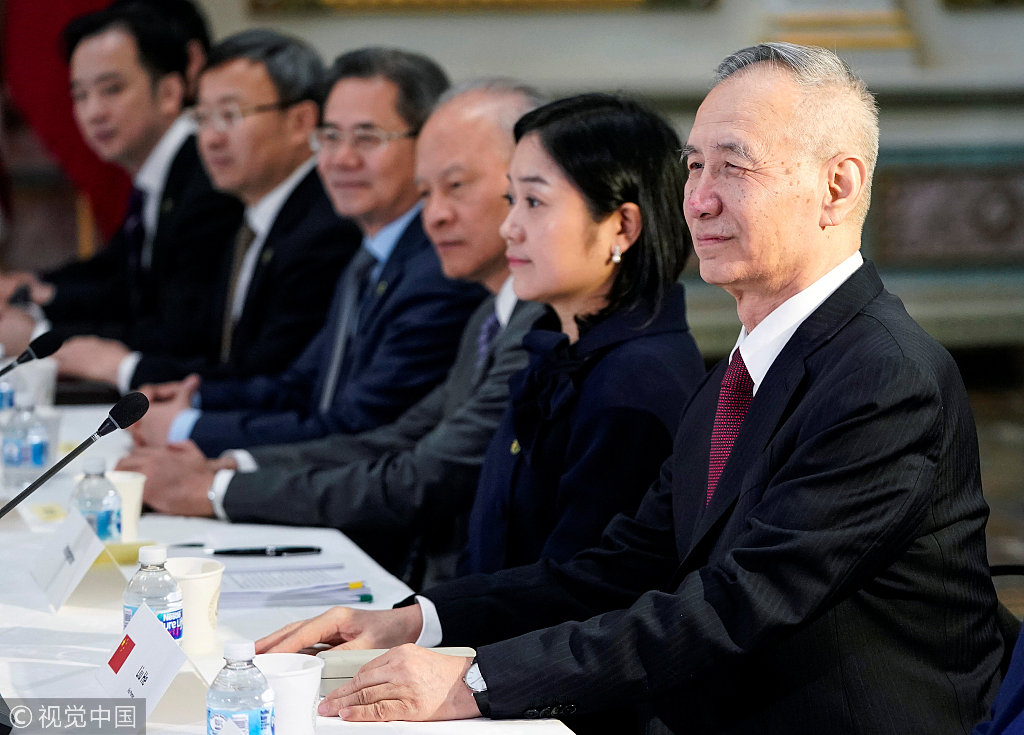
Opinion
18:05, 23-Feb-2019
What’s behind extended Sino-U.S. trade talks?
Liu Jianxi

Chinese negotiators will extend their stay in Washington by two days in an effort to end the seven-month trade war. “The fact that they [Chinese representatives] are willing to stay for quite a bit longer… means something,” U.S. President Donald Trump reportedly said.
Both China and the United States delivered optimistic messages on reaching a fundamental trade deal. “I think we are making a lot of progress” and there was a “very good chance a deal could be made,” CNBC quoted Trump as saying. Chinese leader's special envoy Liu He, as well, told reporters that his team was “ready” for an agreement.
It's worth noting that in his talks with Trade Representative Robert Lighthizer on Thursday, the president is straightforward in his demand for a “final contract” rather than a memorandum of understanding (MOU). “To me the final contract is really the thing… To me, MOUs don't mean anything,” Trump reportedly said.
As a response, Lighthizer pledged that “From now on, we are not using the term memorandum of understanding anymore… We're going to use the term trade agreement. We'll have the same document, but it's going to be known as a trade agreement.”
The terminology on the document is vivid evidence that Trump has attached great importance to the possible deal with China. The president anticipates reaching an agreement that is “going to last for many, many years.”

U.S. Trade Representative Robert Lighthizer speaks during a meeting between U.S. President Donald Trump and Chinese Vice Premier Liu He in the Oval Office of the White House, in Washington, D.C., February 22, 2019. /VCG Photo
U.S. Trade Representative Robert Lighthizer speaks during a meeting between U.S. President Donald Trump and Chinese Vice Premier Liu He in the Oval Office of the White House, in Washington, D.C., February 22, 2019. /VCG Photo
The extension of the talks makes a prolonged trade truce more likely, Shi Yinhong, professor of International Relations and director of Center on American Studies at Renmin University of China, told CGTN. Earlier, Trump said he could envision extending the March 1 deadline if he sees “substantial progress being made.”
On the one hand, the world's largest two economies are eager to clinch a deal as soon as possible after feeling the heat of the tit-for-tat tariff fight. But then on the other, neither is willing to make excessive concessions to the other on structural issues.
This, according to Shi, explains why no trade agreement has yet been signed despite positive rhetoric.
The exchange of tariff-hike threats has taken a toll on not only the warring parties, but also the world economy. A Bloomberg survey suggests that GDP will expand at a slower pace in both China and the United States in 2019.
Moreover, strains in the world's most important pair of relations are dampening investors' confidence, causing a plunge in global equities.

China's Vice Premier Liu He listens as U.S. President Donald Trump (not pictured) speaks during a trade meeting in the Oval Office of the White House in Washington, D.C., February 22, 2019. /VCG Photo
China's Vice Premier Liu He listens as U.S. President Donald Trump (not pictured) speaks during a trade meeting in the Oval Office of the White House in Washington, D.C., February 22, 2019. /VCG Photo
Given the above, Beijing and Washington have been doubling their efforts to meet halfway on a trade agreement. Seven rounds of talks have been held so far in just two months since Trump's summit with his Chinese counterpart Xi Jinping in Buenos Aires.
But still, the negotiations stopped short of breakthroughs on structural issues. Although no detail has been released so far, it is widely believed that divergences in China's alleged intellectual property (IP) theft, “forced” technology transfer, state “control” over the market, and an enforcement mechanism is what is thwarting the signing of a fundamental deal.
Admittedly, more work needs to be done to eliminate IP violations in China, but the country's efforts in this regard cannot be underestimated. Earlier, China established the IP Court under the Supreme Court to strengthen the legal protection of IP rights.
Regarding China's socialist system, Beijing has reiterated that the combination of planning and market is a Chinese character that does not imply opposition to open and free trade. It would be naïve to demand China make concessions on issues that concern its core interests.
China has already shown its utmost sincerity in reaching a deal. As a gesture of goodwill, China pledged earlier to buy an additional 10 million metric tons of soybeans and is proposing in the latest round of trade talks that it could spend 30 billion U.S. dollars more a year on American corn, soybeans and wheat, according to Bloomberg.

China's Vice Premier Liu He (R), Chinese vice ministers and senior officials are at the White House in Washington, U.S., February 21, 2019. /VCG Photo
China's Vice Premier Liu He (R), Chinese vice ministers and senior officials are at the White House in Washington, U.S., February 21, 2019. /VCG Photo
China is devoting tremendous efforts in exchange for Trump's softened stance on structural issues, Shi said, adding that to end the multi-lose trade war, the United States has no alternative but be less demanding on matters concerning China's core interests.
Encouragingly, there are reports that the two countries are considering a Xi-Trump summit at the latter's Mar-a-Lago resort late in March. The meeting, if held, will open a new chapter in Sino-U.S. relationship.
In less than a week before the March 1 deadline, the two parties must create more favorable conditions for the possible Xi-Trump meeting and take the extended negotiations as an opportunity to restore the Beijing-Washington relationship, the most important pair of ties in the world.
(If you want to contribute and have specific expertise, please contact us at opinions@cgtn.com)

SITEMAP
Copyright © 2018 CGTN. Beijing ICP prepared NO.16065310-3
Copyright © 2018 CGTN. Beijing ICP prepared NO.16065310-3